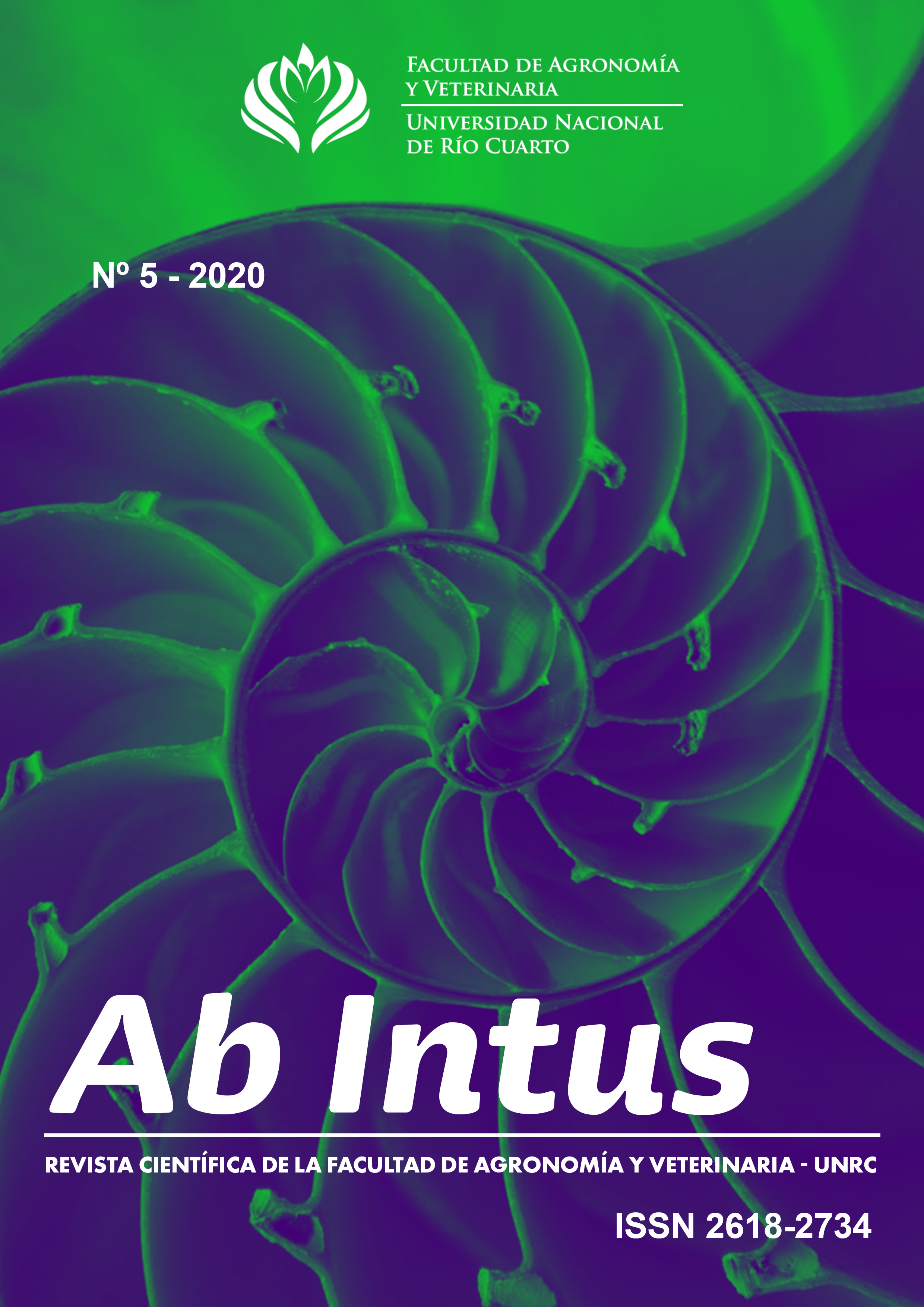Evaluación de caracteres vegetativos y reproductivos de Adesmia bicolor en cultivo bajo fertilización con fósforo
Resumen
En la región árida-semiárida central de Argentina la producción de forraje está basada principalmente en pastizales naturales. La incorporación de leguminosas forrajeras nativas en estos ambientes resulta una estrategia favorable, debido a la capacidad que poseen para fijar nitrógeno atmosférico. Adesmia bicolor ha sido evaluada con este fin y, si bien se ha avanzado en el conocimiento de algunas características agronómicas, aún no existen estudios acerca del efecto de fertilizantes fosfatados sobre su crecimiento y desarrollo. El análisis de suelo previo a la experiencia detectó un nivel bajo de P, equivalente a 8 ppm, por lo que el objetivo de este trabajo fue determinar el efecto de un fertilizante fosfatado sobre los caracteres vegetativos y reproductivos de A. bicolor en cultivo. Se aplicaron dos tratamientos con las siguientes dosis de fertilizante: tratamiento I (50 kg ha-1 P), tratamiento II (100 kg ha-1 P) y control (0 kg ha-1 P). Durante el estadio vegetativo del cultivo se analizaron los siguientes caracteres: número de hojas, estolones y yemas m-2, longitud y ancho de 50 foliolos. En estadio reproductivo se determinó cantidad de flores y frutos m-2 y por racimo. Los resultados demuestran que en el tratamiento con aplicación de 50 kg ha-1 P tanto los caracteres vegetativos como los reproductivos alcanzaron los mayores valores de producción, por lo que esta dosis sería la más adecuada para la fertilización del cultivo de A. bicolor en suelos con bajas concentraciones de P.
Descargas
Descargas
Publicado
Cómo citar
Número
Sección
Licencia
Derechos de autor 2023 Ab Intus

Esta obra está bajo una licencia internacional Creative Commons Atribución-NoComercial 4.0.


















